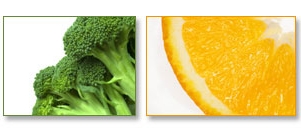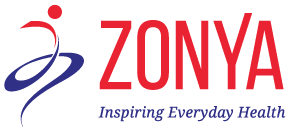What’s Homocysteine and Why Should I Care?
Just when you learned to say “cholesterol,” now it’s time to learn the new word “homocysteine.” (Try it on your tongue: home-o-sis-teen). Just like cholesterol, it’s a normal ingredient in your blood, yet at high levels, wreaks havoc in the walls of your blood vessels. Yet unlike cholesterol, it does more than hurt your heart.
What is homocysteine?
 Homocysteine is an amino acid that’s used to make protein. Although this sounds harmless, the results from more than 20 studies are remarkably consistent: people with high homocysteine levels were three times more likely to have a heart attack over the next five years. Additionally, there is evidence that people with elevated homocysteine levels have twice the normal risk of developing Alzheimer’s disease.
Homocysteine is an amino acid that’s used to make protein. Although this sounds harmless, the results from more than 20 studies are remarkably consistent: people with high homocysteine levels were three times more likely to have a heart attack over the next five years. Additionally, there is evidence that people with elevated homocysteine levels have twice the normal risk of developing Alzheimer’s disease.
Folic acid to the rescue
Researchers are finding that people with high homocysteine levels are getting too little of the vitamin folic acid, which is needed to convert homocysteine to other things. And that means homocysteine builds up. The good news: it can be corrected if they consume enough folic acid. (While it’s important to mention that vitamins B-6 and B-12 are also implicated as beneficial, folic acid has had the most effect in reducing homocysteine).
Not only for heart disease, but birth defects too
While the heart disease and Alzheimer’s links to folic acid is fairly new, experts have long known the importance of folic acid in preventing birth defects like spina bifida. This defect occurs in the early days of pregnancy and therefore can happen before most women even know they’re pregnant, (roughly half of all pregnancies are unplanned). Although pre-natal vitamins contain 400 mcg of folic acid, to be sure it doesn’t come too late, it is critical that women ensure adequate folic acid intakes throughout their childbearing years.
Oh, and perhaps colon cancer too…
Did you know that the whole intestinal lining turns over every three to five days? Any tissue that reproduces quickly requires a lot of folic acid. Researchers have found lower folate levels in the colons of people who’ve had precancerous polyps.
Do you get enough folic acid?
The average American gets only 285 micrograms a day – far short of the 400 mcg many experts recommend. If you’re anything like the on-the-go “average American,” you may very well be marginal yourself. Folic acid (also referred to as “folate”), is easily found in green vegetables, legumes like lentils, pinto, navy, black-eyed peas and garbanzo beans, wheat germ, oranges and orange juice, fortified cereals, and of course, vitamin supplements.
Simple secrets for getting enough folic acid
- Eat beans four times per week (if not daily). This has twice as many health benefits if it replaces meat. Think this is hard? Think again … Monday lunch: navy bean or lentil soup. Wednesday salad bar: black beans. Friday snack: Hummus and veggies. Saturday: bean burritos, chili, or baked beans. See?
- Double up on your dark greens, both cooked and raw. Start with a bigger bowl, and go for spinach, kale and arugula. Also add greens to soups, spaghetti sauce and stir-fry.
- Choose broccoli several times per week.
- Store a jar of wheat germ next to your milk. Sprinkle on your cereal or yogurt.
The role meat plays in all of this
Blood levels of homocysteine tend to be highest in people who eat a lot of animal protein, so as you are increasing your servings of veggies, be sure to be keeping your meat portions in check. Four ounces daily is ideal for most people.
Skip eating well and just take vitamins?
The beauty of our scientific studies is to rule out all factors to find the one thing that has the effect. If we use any common sense at all, we’ll realize why our master maker mixed so many nutrients into the “fruits” of our lands.
Ironically, each of the foods high in folic acid are the “unrefined fruits” of our land, vegetables, legumes, fruits and grains, and are loaded with other great things like fiber, potassium, vitamins, antioxidant, phytochemicals of all kinds, and so on.
Getting what we need from our FOODS FIRST makes sense. Do I also recommend taking a supplement? YES. But only as a last cry for “good nutrition insurance.” For the smart FOODS FIRST approach, both of my cookbooks are packed with recipes featuring folic acid rich foods. Check out lots of free recipes here.
Read How Many Servings of Fruit and Vegetables Do You Eat Every Day, Really? to learn how to amp up your servings of folate-rich foods.
